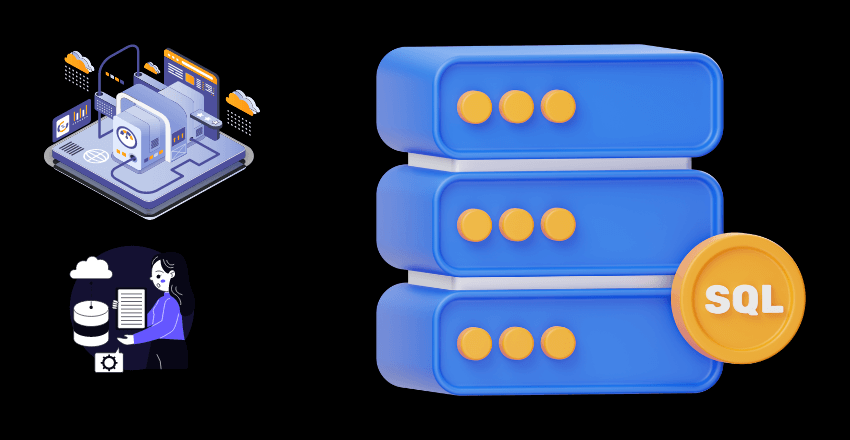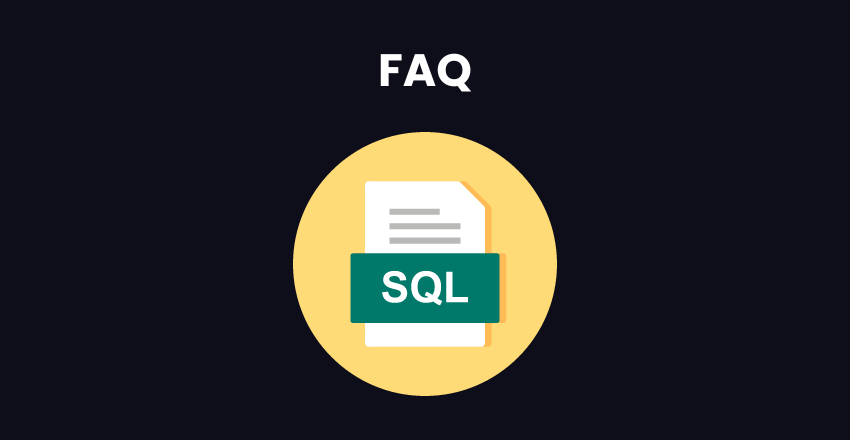
SQL for Web Applications teaches how to leverage SQL to build dynamic, data-driven web apps. Master querying, schema design, transactions, and integrating SQL with application code.
The importance of building and maintaining robust web-based applications cannot be overstated. That’s why SQL integration has become a staple in web development. SQL provides a powerful framework for handling data, making it a crucial tool for building effective web applications.
However, mastering SQL for web applications can be challenging. That’s where HireSQL comes in. As an outsourcing company based in South America, we provide dedicated SQL developers proficient in English to help businesses enhance their web application development efforts.
Key Takeaways
- SQL integration is a crucial component in building effective web applications.
- HireSQL provides dedicated SQL developers fluent in English to help businesses improve their web application development efforts.
If you are looking to improve your web applications, consider partnering with HireSQL for your SQL development needs.
Understanding SQL Basics
Structured Query Language (SQL) is a programming language used to manage data stored in relational databases. It is the language of choice for managing data in web applications and is a fundamental component of web development.
SQL is a declarative language, meaning that it is used to describe the desired results rather than the specific steps needed to achieve those results. It uses a set of commands to manipulate data in a database and is used to create, modify, and query databases.
SQL Basics
The basic components of SQL are:
- Database design: This involves creating a plan for organizing data in a database.
- Data manipulation: This involves adding, modifying, and deleting data in a database.
- Querying databases: This involves retrieving specific data from a database.
SQL is used to create and manipulate objects in a database, such as tables, views, and indexes. It allows you to define relationships between database objects, such as tables and columns, and perform complex queries to retrieve data.
SQL is a standard language, meaning that it is used by all major relational database systems, including MySQL, PostgreSQL, and Microsoft SQL Server. This means that the SQL commands used to create, modify, and query databases are largely the same across different platforms.
SQL Language
The SQL language consists of keywords that are used to perform various tasks. Some of the most commonly used keywords include:
| Keyword | Description |
|---|---|
| SELECT | Used to retrieve data from a database |
| INSERT | Used to add data to a database |
| UPDATE | Used to modify data in a database |
| DELETE | Used to remove data from a database |
SQL also includes operators and functions that are used to perform calculations and manipulate data. These include arithmetic operators such as +, -, *, and /, comparison operators such as =, !=, , and functions such as COUNT, SUM, and AVG.
Mastering the basics of SQL is essential for anyone looking to build web applications that rely on databases. In the next section, we will explore how SQL is used in web application development.
Example SQL query:
SELECT *
FROM employees
WHERE salary > 50000;
SQL for Web Application Development

Web application development requires the integration of SQL to optimize database performance, handle data transactions efficiently, and improve security. Therefore, it is vital to follow SQL best practices to ensure the smooth operation of web applications.
One best practice is to avoid using SELECT * when querying large tables as it can increase the processing time. Instead, specify the columns needed to save time and resources. Another best practice is to use parameterized queries to prevent SQL injection attacks and protect the database from unauthorized access. Additionally, regular backups, database normalization, and proper indexing can help optimize performance, reduce errors, and enhance the stability of web applications.
Furthermore, developers must ensure that their SQL queries are optimized for performance. They can do this by using explain plans to identify inefficient queries and optimize them accordingly. Moreover, utilizing proper indexing and stored procedures can significantly enhance query performance.
It is worth noting that SQL best practices may vary depending on the web application’s specifics, size, and complexity. Therefore, it is recommended to explore different SQL optimization techniques and strategies to determine the best approach for each project.
SQL Best Practices for Web Application Development

| Best Practice | Description |
|---|---|
| Avoid SELECT * | Instead, specify the columns needed to save time and resources. |
| Use Parameterized Queries | Prevent SQL injection attacks and protect the database from unauthorized access. |
| Perform Regular Backups | Ensure the safety and integrity of the data. |
| Normalize the Database | Reduce redundancy and improve data consistency. |
| Apply Proper Indexing | Enhance query performance and data retrieval speed. |
| Optimize Query Performance | Use explain plans and consider stored procedures to optimize query performance. |
Proper utilization of SQL best practices is vital in web application development. It ensures optimal performance, security, and stability of the web application.
Therefore, it is recommended to stay updated with the latest SQL practices and techniques to enhance developers‘ skills and deliver high-quality SQL solutions for web applications.
For example:
SELECT * FROM Customers WHERE CustomerName = 'John Doe';
Database Management with SQL

SQL is an essential component of database management, providing developers with the ability to create and manage database structures and perform necessary maintenance tasks. With SQL, developers can create tables, define relationships between them, and ensure data integrity. SQL administration is a critical skill for ensuring the smooth operation of web applications.
One of the primary benefits of using SQL for database management is the ability to execute complex queries and retrieve data quickly and efficiently. SQL also allows developers to perform tasks such as filtering and sorting data, updating records, and deleting data, providing greater flexibility and control over data management.
When working with SQL for database management, it is essential to follow best practices to ensure optimal performance and security. For example, developers should use prepared statements to prevent SQL injection attacks and parameterized queries to avoid potential security vulnerabilities. They should also ensure that database structures are properly indexed to improve query performance and avoid unnecessary table scans.
Creating Tables with SQL
The first step in using SQL for database management is to create a table to store data. A table is a collection of data organized into columns and rows. Columns define the type of data stored in the table, while rows represent individual records.
The basic SQL syntax for creating a table is as follows:CREATE TABLE table_name ( column1 datatype, column2 datatype, column3 datatype, .... );
For example, to create a table called “users” with a user ID, username, and email address, the SQL statement would be:
CREATE TABLE users ( id INT PRIMARY KEY, username VARCHAR(255), email VARCHAR(255) );
Defining Relationships with SQL
Database relationships are essential for organizing and managing data effectively. SQL provides several methods for defining relationships between tables, including primary keys, foreign keys, and indexes.
A primary key is a unique identifier for each record in a table, while a foreign key is a field in one table that refers to the primary key in another table. By using foreign keys, developers can create relationships between tables, allowing them to retrieve data from multiple tables and perform operations on related records.
Indexes are used to speed up searches and queries, allowing developers to retrieve data more quickly and efficiently. By indexing frequently-searched fields, developers can improve query performance and reduce the time required to execute complex queries.
Performing Maintenance Tasks with SQL
In addition to creating and managing database structures, developers can use SQL to perform maintenance tasks such as adding and deleting records, updating records, and backing up databases. These tasks are essential for ensuring the ongoing operation of web applications and maintaining the integrity of data.
SQL provides several commands for performing database maintenance tasks, including INSERT, UPDATE, DELETE, and SELECT. These commands allow developers to retrieve data from tables, add or update records, and delete data as necessary.
For example, to insert a new record into the “users” table created earlier, the SQL statement would be:
INSERT INTO users (id, username, email) VALUES (1, 'JohnDoe', 'johndoe@email.com');
SQL also provides commands for updating records and deleting data as necessary, allowing developers to maintain data integrity and ensure that databases remain up-to-date and accurate.
Overall, SQL is an essential tool for database management in web applications. By using SQL to create and manage database structures, define relationships between tables, and perform maintenance tasks, developers can ensure the smooth operation of web applications and maintain data integrity. SQL administration is an essential skill for any developer working with web applications.
SQL Integration in Web Development Frameworks

The integration of SQL in web development frameworks is a crucial aspect of building robust and scalable web applications. By leveraging the power of SQL, developers can handle data transactions efficiently and optimize database performance.
Popular web development frameworks such as Django, Ruby on Rails, and Laravel all offer powerful SQL integration capabilities. With these frameworks, developers can easily create and manage database tables, define relationships between tables, and perform complex queries using SQL commands.
SQL Integration with Django
Django is a popular Python-based web development framework that supports SQL integration through its Object-Relational Mapping (ORM) layer. With Django’s ORM, developers can interact with databases using Python objects, making it easier to work with data and handle complex queries. Additionally, Django supports multiple database backends, allowing developers to choose the database that best suits their needs.
SQL Integration with Ruby on Rails
Ruby on Rails, an open-source web development framework based on the Ruby language, also offers strong support for SQL integration. With Rails, developers can easily create and manage database tables using SQL commands or Rails’ built-in ORM layer, ActiveRecord. ActiveRecord abstracts away much of the complexity of SQL, allowing developers to interact with databases using simple Ruby code.
SQL Integration with Laravel
Laravel, a PHP-based web development framework, provides excellent SQL integration capabilities through its Eloquent ORM layer. Eloquent allows developers to interact with databases using PHP code, making it easy to perform complex queries and manage database relationships. Additionally, Laravel supports multiple database backends, enabling developers to choose the right database for their project.
By leveraging SQL integration in web development frameworks, developers can enhance the functionality and performance of their web applications. With the right tools and techniques, developers can create powerful and efficient web applications that meet the needs of their users.
If you are looking for dedicated SQL developers to assist with your web application development, consider outsourcing to HireSQL. Our team of experienced SQL developers can help you build robust and scalable web applications that meet your business needs.
Advanced SQL Techniques for Web Applications
SQL is a powerful tool for web development, and mastering advanced techniques can help optimize web applications for efficiency and speed. Below are some advanced SQL techniques that can be applied to achieve web application optimization:
1. Indexing
Proper indexing is essential for efficient data retrieval in SQL. By creating indexes on frequently queried columns, the time it takes to retrieve data is significantly reduced. Indexes can be created using the CREATE INDEX statement.
2. Query Optimization
SQL query optimization involves analyzing queries and identifying ways to improve their performance. Techniques such as using subqueries and optimizing joins can help reduce the time it takes to retrieve data.
3. Performance Tuning
Performance tuning involves fine-tuning SQL queries and database configurations to optimize web application performance. Techniques such as configuring buffer sizes and optimizing disk I/O can help improve the speed and efficiency of SQL-driven web applications.
4. Stored Procedures and Functions
Stored procedures and functions are precompiled SQL code that can be executed with a single command. They can significantly improve the speed and efficiency of complex SQL statements and reduce network traffic.
By utilizing these advanced SQL techniques, web application developers can enhance the performance and efficiency of their applications, providing a better user experience. HireSQL offers dedicated SQL developers proficient in English who can assist with SQL optimization and other web development needs. Contact us today to learn more.
SQL Security in Web Applications

It’s a powerful tool for web application development, but it’s important to keep security in mind when utilizing it. SQL injection attacks are one of the most common types of web application vulnerabilities, and they can lead to sensitive data being compromised or even full control over the web application being obtained by attackers.
One of the best ways to protect against SQL injection attacks is to use parameterized queries in SQL commands. This involves using placeholders in the SQL statement for user-generated input, which are then filled in with the actual input values. This prevents attackers from injecting their own SQL code into the statement, as the input is treated as data rather than code.
Another important security consideration is controlling access to the database itself. It’s important to ensure that only authorized users have access to the database, and that permissions are properly set up to limit what actions each user can perform. Additionally, it’s important to ensure that passwords and other sensitive data are stored securely, using techniques such as hashing and salting.
By following best practices for SQL security in web applications, developers can protect against common vulnerabilities and ensure the safety of their users’ data.
HireSQL: Dedicated SQL Developers for Web Applications
Looking for a team of skilled SQL developers to help you build robust web applications? Look no further than HireSQL, the top outsourcing company based in South America providing dedicated SQL developers proficient in English.
Our team of developers has years of experience in developing high-quality SQL solutions for clients across industries, and we pride ourselves on delivering customized solutions tailored to each client’s unique needs.
When you hire a dedicated SQL developer from HireSQL, you can rest assured that you are getting top-notch expertise at affordable prices. Our developers are proficient in a range of SQL technologies and frameworks, including MySQL, PostgreSQL, and Oracle, and can handle tasks such as database design, SQL administration, and database management with ease.
Outsourcing SQL development for web applications can be a smart move for companies looking to streamline their development processes and reduce costs. With HireSQL, you can tap into a pool of talented developers without the hassle of hiring and managing them in-house.
Whether you need a dedicated developer for a specific project or ongoing SQL support for your web applications, HireSQL has the expertise and resources to deliver top-quality solutions on time and within budget.
FAQ

Q: What is SQL for web applications?
A: SQL for web applications refers to the use of Structured Query Language (SQL) in the development and management of web-based applications. SQL is a programming language used to interact with relational databases, allowing developers to store, retrieve, and manipulate data efficiently. In the context of web applications, SQL plays a crucial role in handling database operations and integrating them seamlessly with the web interface.
Q: Why is SQL integration important in web development?
A: SQL integration is important in web development because it allows developers to effectively manage and store data in a structured format. By integrating SQL into web applications, developers can easily retrieve and manipulate data, perform complex queries, and ensure database consistency. SQL integration also enables efficient data storage and retrieval, improving the overall performance and functionality of web applications.
Q: What are the basics of SQL?
A: The basics of SQL involve understanding the core concepts and syntax of the SQL language. This includes knowledge of database design, creating and managing tables, inserting and updating data, and querying databases using SELECT statements. Additionally, understanding SQL functions, operators, and clauses is essential for writing effective SQL statements.
Q: How does SQL support web application development?
A: SQL supports web application development by providing a robust and efficient way to handle database operations. It allows developers to easily create, manipulate, and query databases, ensuring accurate and reliable data storage. SQL also enables developers to implement advanced features such as data validation, security measures, and transaction handling, resulting in secure and reliable web applications.
Q: What is the role of SQL in database management?
A: SQL plays a crucial role in database management. It allows developers to create and manage database tables, define relationships between tables through primary and foreign keys, and perform data maintenance tasks such as updating, deleting, and inserting data. SQL also enables developers to optimize database performance through indexing and query optimization techniques.
Q: How is SQL integrated into web development frameworks?
A: SQL is integrated into web development frameworks through the use of database abstraction layers or Object-Relational Mapping (ORM) libraries. These frameworks provide a standardized way to interact with databases using SQL, simplifying the development process and allowing developers to focus on building the application logic. SQL statements are typically written within the framework’s code, enabling seamless integration with the database layer.
Q: What are some advanced SQL techniques for web applications?
A: Advanced SQL techniques for web applications include indexing, query optimization, and performance tuning. Indexing is the process of creating indexes on database columns to improve query performance. Query optimization involves analyzing and restructuring SQL queries to enhance their efficiency. Performance tuning focuses on optimizing the overall performance of a web application by fine-tuning SQL queries, database configuration, and server settings.
Q: How can SQL security be ensured in web applications?
A: SQL security in web applications can be ensured by implementing best practices such as parameterized queries, input validation, and user authentication. Parameterized queries prevent SQL injection attacks by separating SQL code from user input. Input validation ensures that user-supplied data meets certain criteria before being processed by the database. User authentication establishes secure access control, preventing unauthorized database access.
Q: What is HireSQL and how can it benefit web development?
A: HireSQL is an outsourcing company based in South America that specializes in providing dedicated SQL developers for web applications. By outsourcing SQL development to HireSQL, businesses can leverage the expertise and experience of skilled developers proficient in English. This allows businesses to optimize their web development projects, enhance database performance, and focus on core business objectives while leaving the SQL development to professionals.
External References
https://stackoverflow.com/questions/34658900/steps-to-build-a-web-app-connected-to-sql-server
https://www.technogoober.com/blog/role-of-sql-in-web-development/
https://news.ycombinator.com/item?id=28156831
James is a highly acclaimed author renowned for his extensive experience in the realm of data development and architecture, offering valuable insights to the data industry through his compelling literary works. Residing in the charming city of Oxford, he embarked on an illustrious academic journey at Oxford University, where he delved into the intricate world of computer science. This foundation served as the catalyst for his exceptional career.
After completing his studies, James embarked on a professional path that led him to renowned technology giants. He first honed his skills as a data developer at Microsoft, where he showcased his prowess in designing and implementing robust data solutions. His innovative contributions played a pivotal role in enhancing data management processes, solidifying his reputation as a meticulous and forward-thinking professional.
Seeking new challenges and broader horizons, James embarked on a transformative journey at Amazon Web Services (AWS). In this influential position, he leveraged his profound understanding of data architecture to shape cutting-edge solutions for clients. His leadership and technical acumen enabled businesses to harness the power of cloud computing and revolutionize their data management practices, further solidifying his status as an industry authority.







